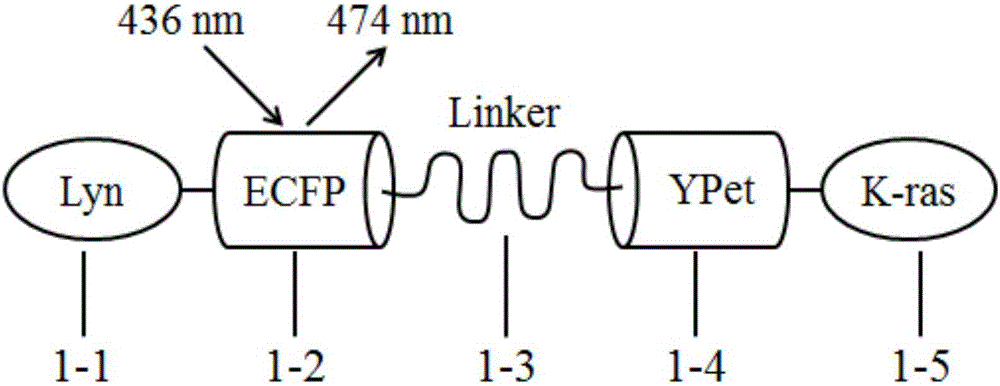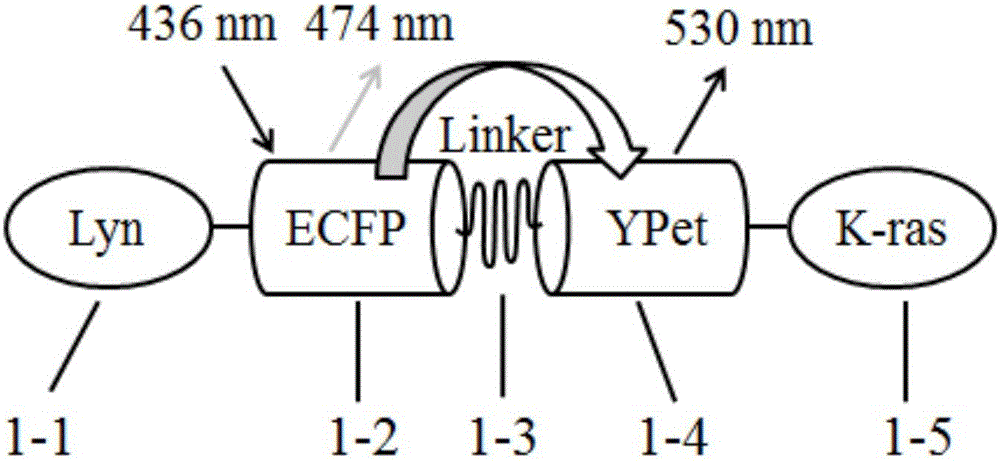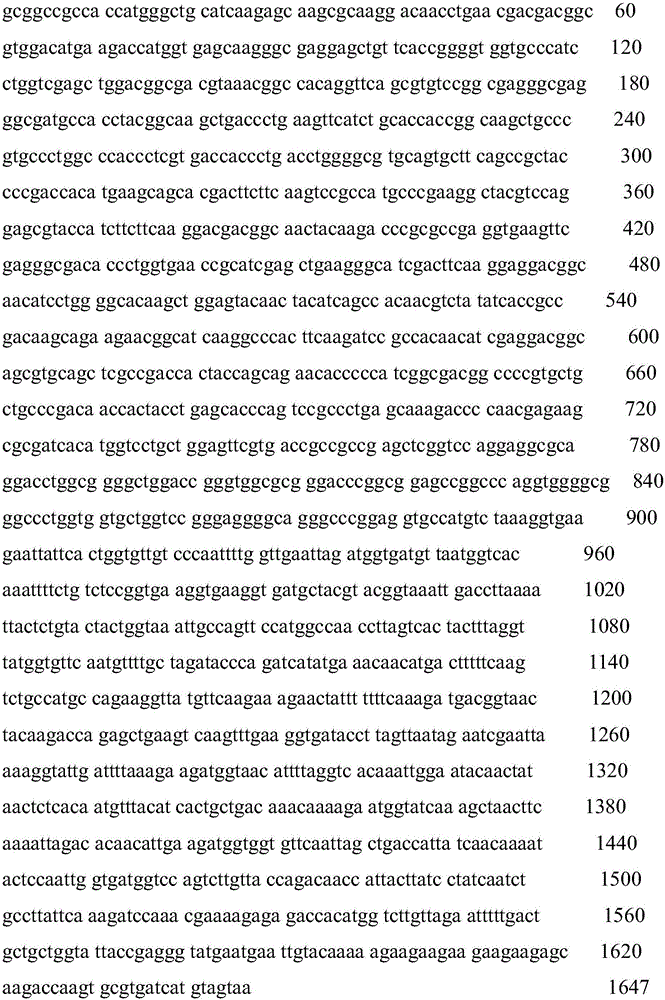Biological probe for detecting surface tension change of living cell membrane
A biological probe and surface tension technology, applied in the fields of cell biology and molecular biology, can solve the problems of high substrate material requirements and low spatial resolution, and achieve the effect of low cost and no side effects
- Summary
- Abstract
- Description
- Claims
- Application Information
AI Technical Summary
Problems solved by technology
Method used
Image
Examples
Embodiment Construction
[0023] The specific implementation manners of the present invention will be further described below in conjunction with the accompanying drawings and technical solutions.
[0024] After the probe is transfected into living cells with a transfection reagent, it can express a fluorescent protein fusion probe structure by itself, and the Lyn sequences 1-1 and K-ras sequences 1-5 at both ends are respectively connected to the cell membrane. When the force changes the surface tension of the cell membrane, the elastic sequence Linker1-3 will be stretched or compressed, causing the FRET fluorescent protein to change the distance between ECFP 1-2 and YPet1-4, resulting in a change in the FRET signal. The transfected cells were excited with a wavelength of 436nm, and the fluorescence images at the wavelengths of 474nm and 530nm were collected simultaneously by FRET microscope, and then the efficiency of energy transfer was analyzed by the ratio of 474nm / 530nm fluorescence intensity, so ...
PUM
 Login to View More
Login to View More Abstract
Description
Claims
Application Information
 Login to View More
Login to View More - R&D
- Intellectual Property
- Life Sciences
- Materials
- Tech Scout
- Unparalleled Data Quality
- Higher Quality Content
- 60% Fewer Hallucinations
Browse by: Latest US Patents, China's latest patents, Technical Efficacy Thesaurus, Application Domain, Technology Topic, Popular Technical Reports.
© 2025 PatSnap. All rights reserved.Legal|Privacy policy|Modern Slavery Act Transparency Statement|Sitemap|About US| Contact US: help@patsnap.com



